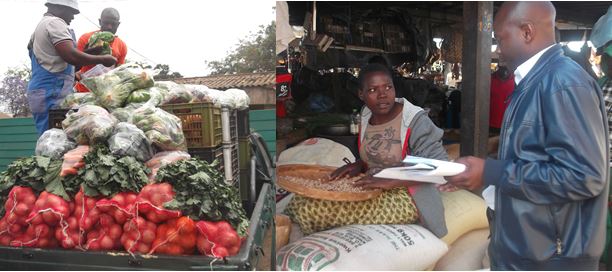From all the training, guidance and ideas directed at poor and marginalized farmers, it is often difficult for these actors to determine the most critical knowledge. As a result there is usually confusion between what is urgent and what is important. While the most important knowledge for smallholder farmers can be on how to enter new markets and sell their commodities, the most urgent knowledge may be on how to conduct a market research and not just rely on agribusiness gossip. Due to this challenge, most farmers end up conducting research while already on the market when a market scan should have been done first.

Some of the most important but not urgent knowledge can be on how to set production forecasts. This assumes value chain actors have access to the big picture. Unfortunately, most African farmers do not have access to enough knowledge to be able to make concrete production forecasts. That is why gluts always alternate with shortages on the market. As the planting season gains momentum, the most urgent knowledge relates to where inputs can be found and who is going to buy what will result from those inputs.
A case for structured ways of seeking and sharing knowledge
In the absence of structured ways of seeking and sharing knowledge, most developing communities cannot separate new knowledge from strategic knowledge which represents their community’s competitive advantage or core knowledge which accurately defines their community. The situation can be worsened by the presence of multiple organizations pushing different agendas in one community. One organization may be promoting water and sanitation as a single issue while another organization promotes small livestock production at the exclusion of all other socio-economic activities whose inter-dependence is more critical than be treated as isolated issues.
Important knowledge can simply be identified through talking to community elders who have seen many changes during their lifetime. While youth can have skills in capturing knowledge through digital technology, elders are the main sources of experiential knowledge, most of which cannot be manipulated through documentation. Where knowledge is siloed in different development actors in the same community, such knowledge is inefficiently used for the benefit of the community. Multiple and inefficient solutions continue to co-exist when consolidating solutions would save the community better.
20 percent of local knowledge which makes 80 percent of the difference
Most farmers may not remember knowledge they used to produce commodities last season because there have not been intentional efforts to capture what happened. Conducting knowledge surveys can reveal what communities are probably forgetting and cases where wheels are re-invented unnecessarily. When value chain actors or community members are assisted to identify their critical knowledge, they become empowered to spend most of their resources on the most valuable knowledge unlike chasing every suggestion.
With the right capacity building initiatives, every community can identify 20% of its knowledge that can make 80% of the difference in terms of community development outcomes and better livelihoods. They can be able to figure out circumstances where rapid learning is needed as well as kinds of knowledge that already exist among all community members, only requiring sharing as opposed to creating from scratch. For instance, if almost every farmer knows how to grow maize, there is no point in wasting time and resources on field days that focus on maize production. On the other hand, where old knowledge needs to be standardized into community routines, ways of standardizing such knowledge should be cultivated. For instance, knowledge on traditional basketry, livestock breeding and pottery can be lost to the future generation if not standardized and introduced into formal education systems. Where local experts like herbalists or black smith are not able to share their knowledge because of its intensely tacit nature, young people should be identified and incentivized to under-study these experts.
Filtering local high value knowledge
High value commodities are often associated with high value knowledge that has to be managed in different ways from low value knowledge. An important part of filtering critical high value local knowledge is identifying barriers to knowledge sharing and devising ways of over-coming such barriers. Some of the barriers can be invisible to local people but outsiders can be able to see those barriers and provide the necessary solutions. Communities in many developing countries need skills in identifying what they need to know in order to avoid mistakes that if solved can move them out of physical and mental poverty.
charles@knowledgetransafrica.com / charles@emkambo.co.zw / info@knowledgetransafrica.com
Website: www.emkambo.co.zw / www.knowledgetransafrica.com
eMkambo Call Centre: 0771 859000-5/ 0716 331140-5 / 0739 866 343-6
